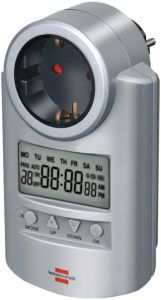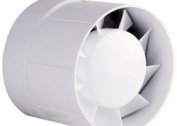The kitchen is a special place in every apartment. It provides household members with the opportunity to eat well. It is also a constant source of various odors that penetrate the rest of the room. In order to avoid the spread of food aromas from the kitchen, an extract is installed over the hob. And almost always it is necessary to make a socket under it. At the same time, you need to consider many nuances, rules, personal preferences. A high-quality, well-chosen outlet for the hood in the kitchen will help to avoid some problems with appliances and electricity.
Technical details and degree of protection
Manufacturers are constantly improving and modernizing sockets, striving to increase their safety and comfort. First of all, they improve the degree of protection. To determine it, an international universal IP table was created. The IP code consists of two digits, where the first indicates the size of the transmitted particles. The second - from what exactly the socket is protected.
| Particle size | What is protected from |
| 0 - no protection | 0 - no protection |
| 1 - from 50 mm | 1 - from drops falling from above |
| 2 - from 12 mm | 2 - from drops falling at an angle of up to 150 |
| 3 - from 2.5 mm | 3 - from drops, the angle of impact of which is from 15 to 60 |
| 4 - from 1 mm | 4 - from spray |
| 5 - partially does not pass dust | 5 - from jets |
| 6 - completely does not pass dust | 6 - from strong water pressure |
| 7 - from incomplete or short-term presence in water | |
| 8 - from immersion in water |
For example, in the kitchen a degree of protection of IP62 and higher is required.
Many models have built-in special curtains that do not allow anything other than the appliance plug to enter the holes. They are ideal for apartments in which young children live.
The option with built-in RCD (residual current device) will help prevent electric shock. This is the most suitable in the kitchen, in the bathroom.
Retractable sockets are gaining more and more popularity among housewives. They are convenient in that they are mounted on any surface and extend only for the duration of the appliance - ideal for the kitchen.
Not so long ago, models with a fork eject function entered the market. They are equipped with a special button, by pressing which the plug of the appliance is pushed out independently.
For connoisseurs of technical innovations in stores, models are presented on the control panel and a timer socket, on which you can set the on / off time of the device.
Choose the best outlet
The variety of models offered by stores is great. They differ in design, price, quality. So what to look for when buying this small, but such an important item? Here are the main criteria:
- all attention is to the manufacturer. Prices for goods from well-known manufacturers are high, quality is often also. But fakes are not uncommon. Therefore, it is worth buying branded, expensive sockets only in trusted stores;
- material. The cheaper the finished product, the worse the material used for its production. Poor quality plastics increase the risk of rapid wear, sparking, melting of the outer shells;
- a high-quality outlet is distinguished by the strength of the assembly, it does not break up, it does not have loose, moving elements;
- ceramic block for a contact group. In cheaper options, ceramics can also be, but it is much softer and worse than in more expensive ones. The block must be intact, without visible and barely noticeable chips and cracks;
- petals for mounting are necessarily stiff, not short. It depends on them how firmly it will hold in the wall;
- contact group design type. There are many species, they differ in the degree of secrecy of contacts.The more open they are, the more problematic the mounting and worse the mounting. Sockets with hidden contacts are most convenient in operation.
- design. A beautiful outlet, suitable for the general style of the kitchen, does not need to be decorated.
Giving preference to a particular model, you should make sure that it is as comfortable and durable as possible. The service life of the connected household appliance directly depends on its quality. It is also a guarantee of the safe use of the power grid and the ability to minimize frequently occurring problems, such as sparking and others.
Installation location: basic rules
When working with electricity, safety is most important. As a result, the strict implementation of the Rules for Electrical Installations (PUE) is a priority. The main ones regarding hoods are as follows:
- it is permitted to place the outlet for the hood in the kitchen above the wall cabinets or near the ventilation shaft. At the same time, the permissible minimum distances to the cabinets are 5 cm, to the ventilation - 20 cm;
- minimum height from the floor - 2 m;
- the presence of grounding contacts with a current of at least 15A is mandatory;
- throughput of the outlet under the hood from 15A;
- When connecting an additional outlet to the line, calculate the total power of all devices. It should not exceed 4 kW. This will avoid overloading the wiring if their network is simultaneously turned on. If this power is exceeded, the hood in the kitchen should be on a separate line.
When installing the hood, the master can offer the option of mounting directly, using terminal blocks. It eliminates the use of plugs and the ability to independently connect and turn off the device. This connection method is not safe, especially in the kitchen, it is extremely undesirable to use it.
A range hood is a useful thing, so using it should be as comfortable as possible. A correctly selected outlet and its location contribute to this as well as possible. For greater convenience, do not place the outlet behind massive cabinets, countertops and other kitchen furniture. It is better to place it in a conspicuous place, visually in the middle of the hood. Many housewives may not like this. The problem is solved quite quickly. Having spent a little time and imagination, you can easily make a decorative object that covers it. For example, a drawer, a coffee panel, a small picture look great.





